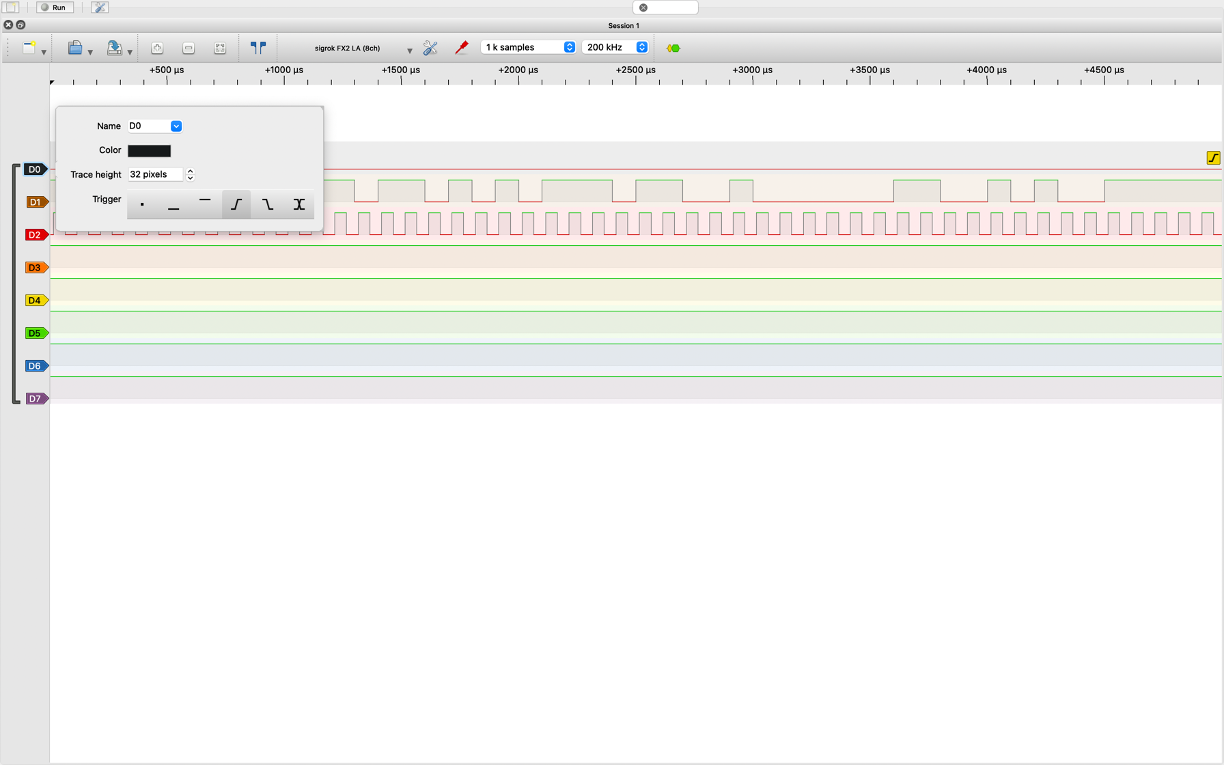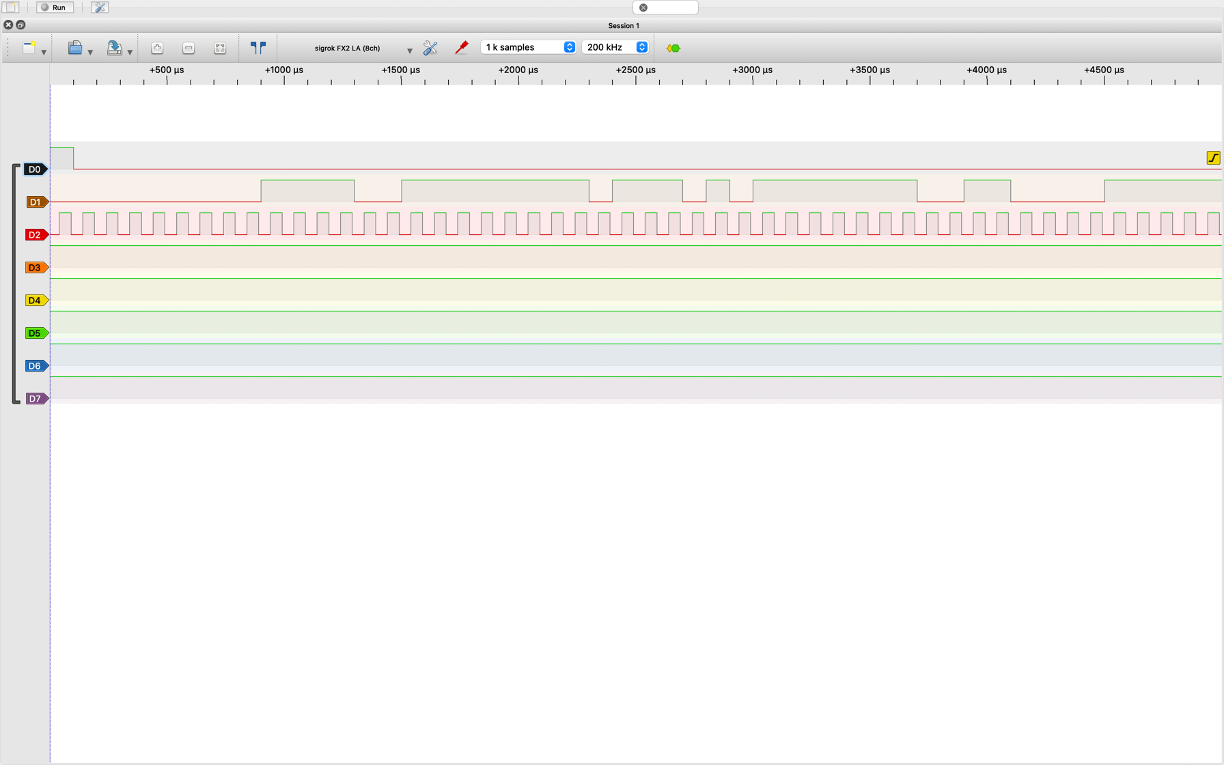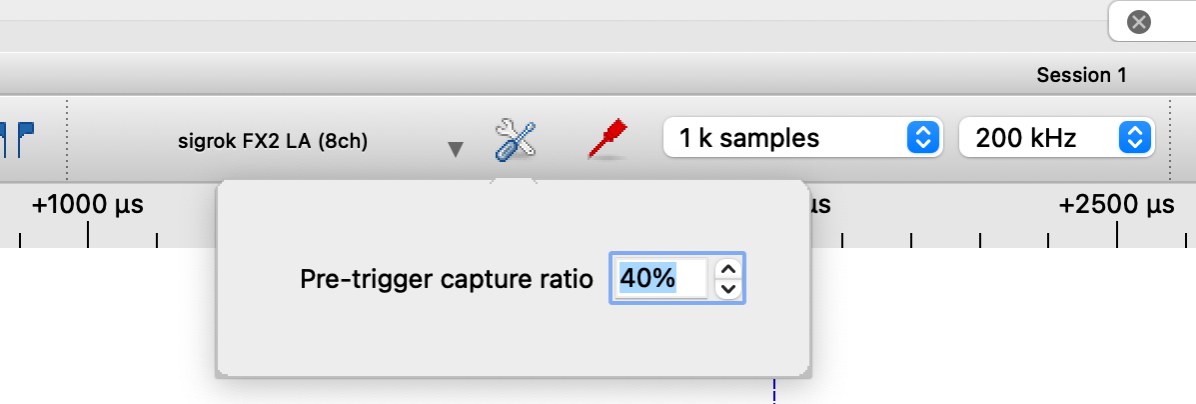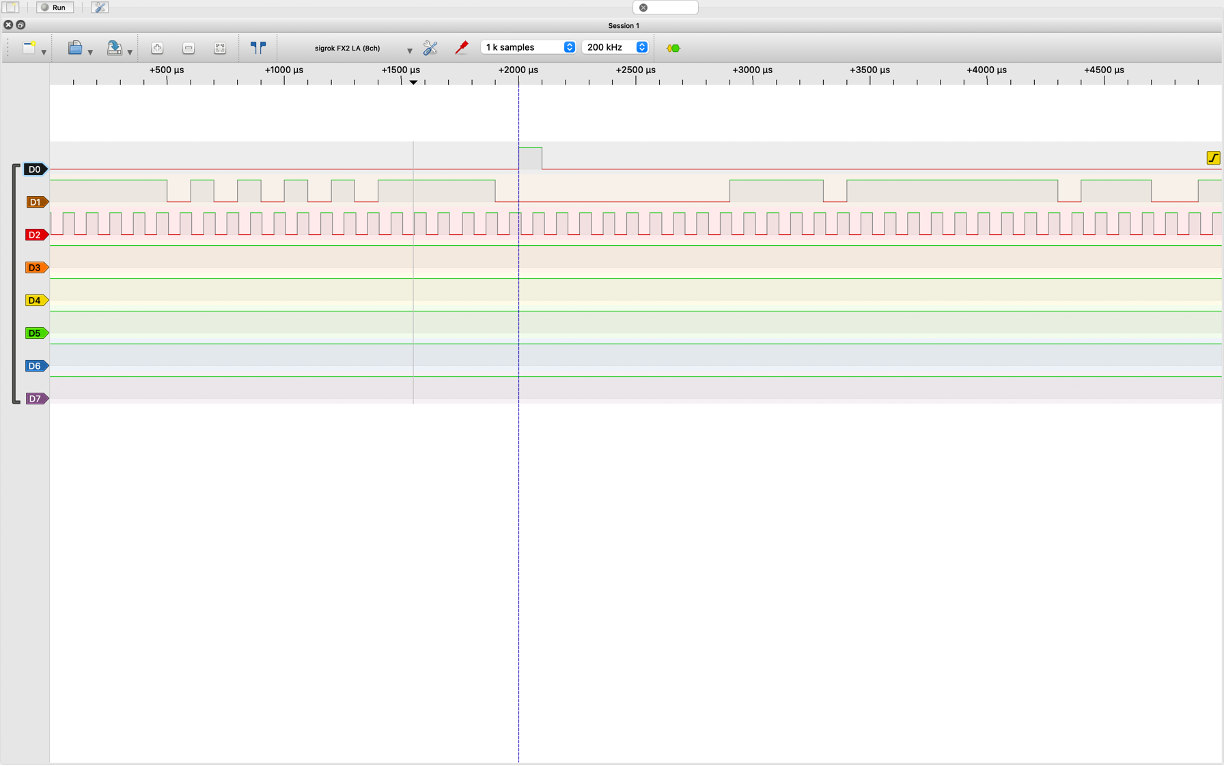Logic Analyzer and PulseView Setup
How to Measure External Digital Signals
Please Log In for full access to the web site.
Note that this link will take you to an external site (https://shimmer.mit.edu) to authenticate, and then you will be redirected back to this page.
Installation
In this page we'll go over the setting up of the logic analyzer and its supporting software. The software, called Pulseview, can be acquired here at the link below. Please download and install the appropriate version for your operating system:
Once installed, in order to verify things are working, grab your logic analyzer. Depending on which one you got (they are functionally the same), it'll look like one of the following:

Plug your logic analyzer into the computer with PulseView installed. Attach the colored probes to the logic analyzer if they are not already connected. Then for testing, using some hookup wires, connect ground to GND on your FPGA and CH0-3 to the pins shown on the FPGA below:
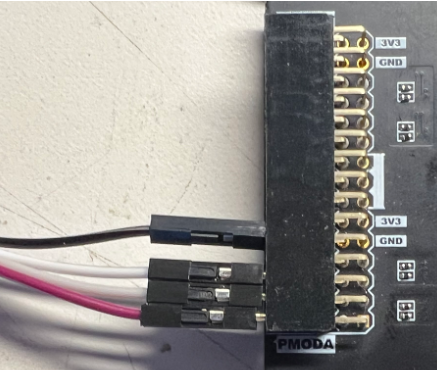
Open up PulseView. At the top of the window should be the device/driver selection. Find the one that says something related to "FX2". That is the general class of device our logic analyzer is.
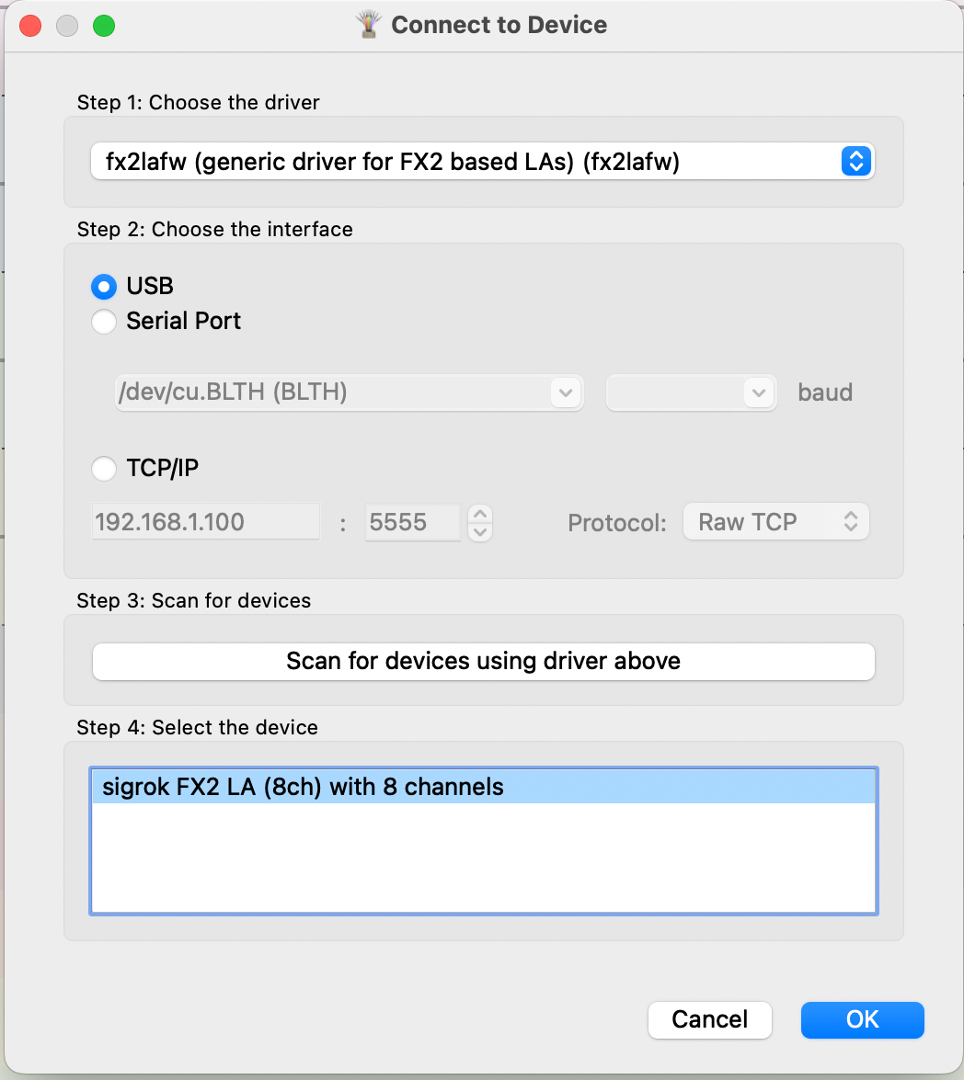
Set your logic analyer to capture 1000 samples at a rate of 200kHz (top center of window). Press "Run" (top left) and chances are you should see some data appear, however it will most likely be all zeroes all the time since we're not giving it any signals now. Let's change that.
Take the same bitfile we tested the openFPGALoader with (or redownload it if you'd like: [here]COURSE/documentation/setup.bit), upload it to your FPGA. This bitfile presents three signals on the FPGA output pins we hooked up to:
- A steady 10 kHz clock at 50% duty cycle
- A pseudorandom 1 bit value changing at a rate of 10kHz
- A signal that fires pseudorandomly and relatively rarely (approximately once per second on average,but)
Do another grab on your logic analyzer and if things are good, you should see something like below:
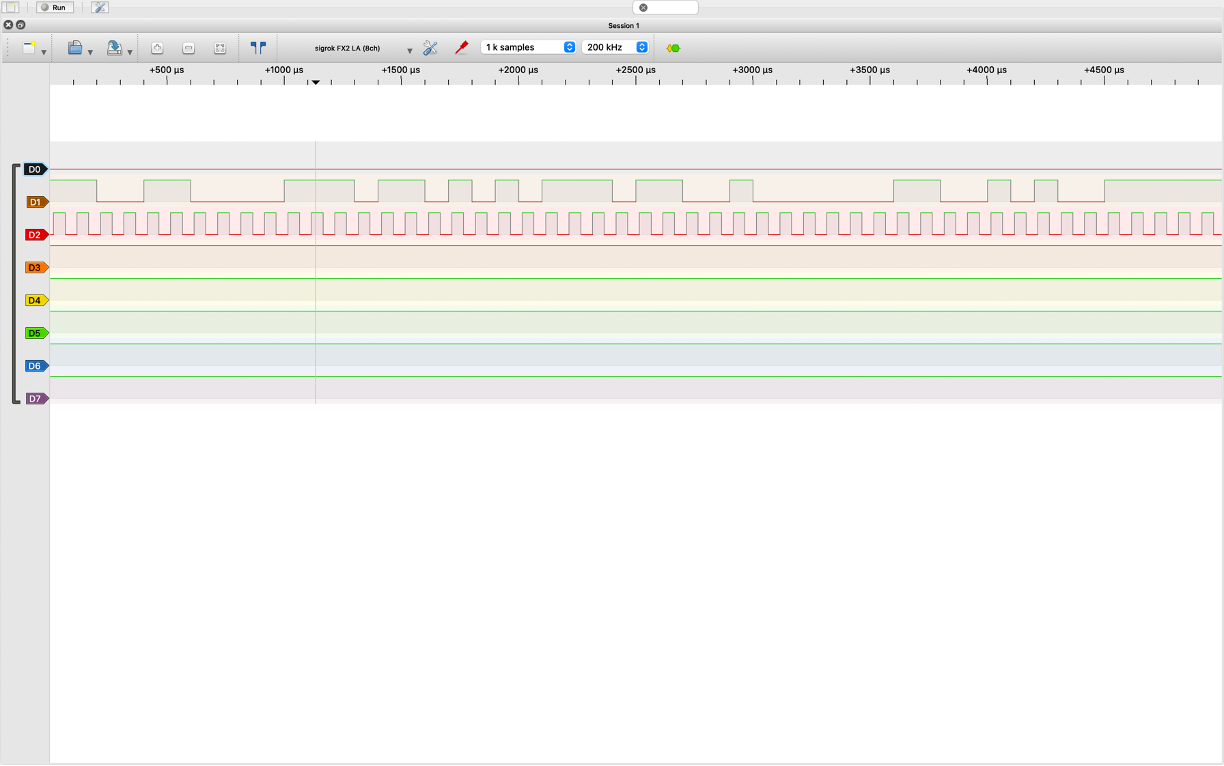
This
Now in the logic analyzer, there's one more signal we didn't mention yet. In pin 3, there is a "rare" signa...something that appears only approximately every three seconds.
This is where triggers come in.
